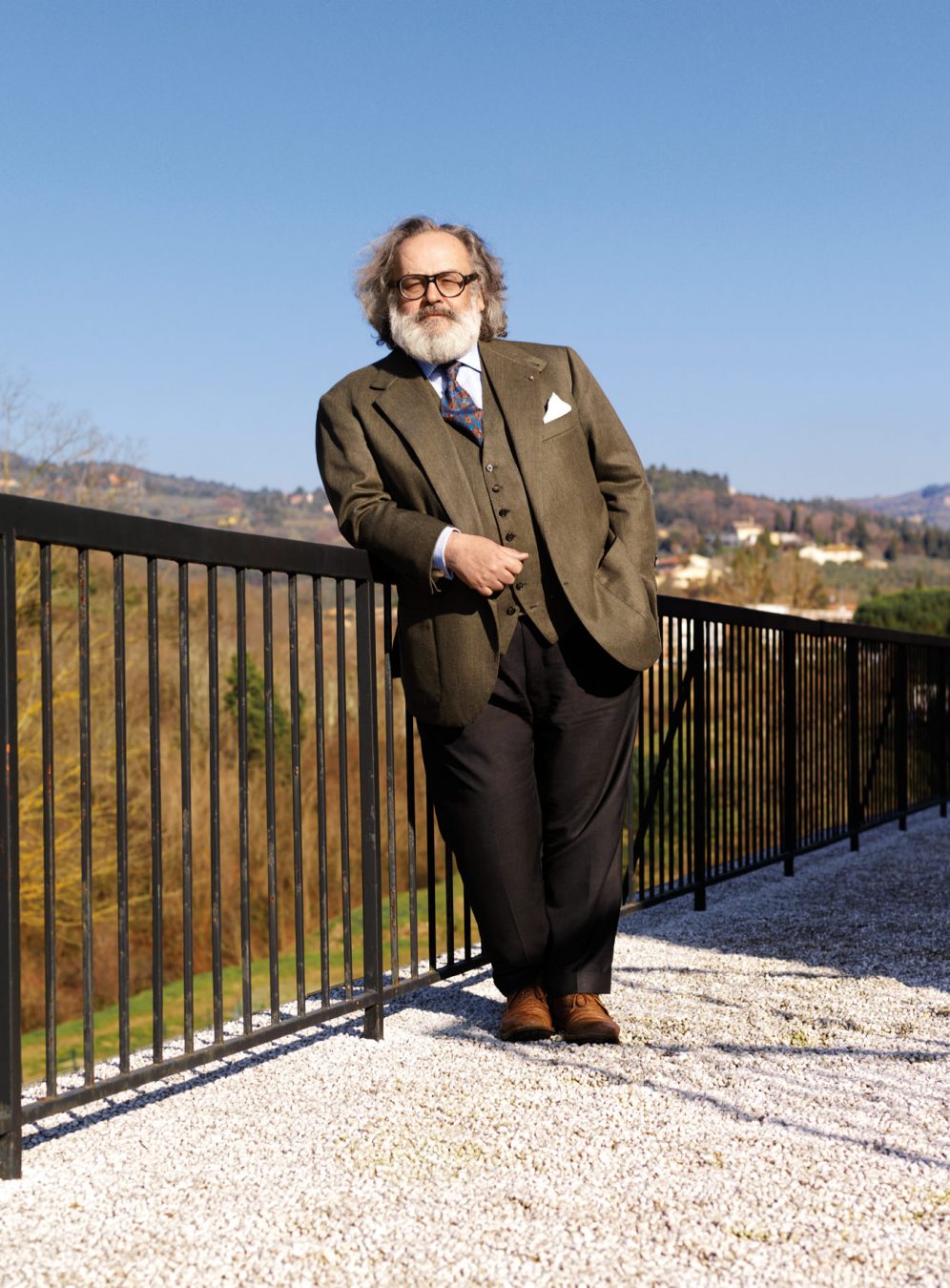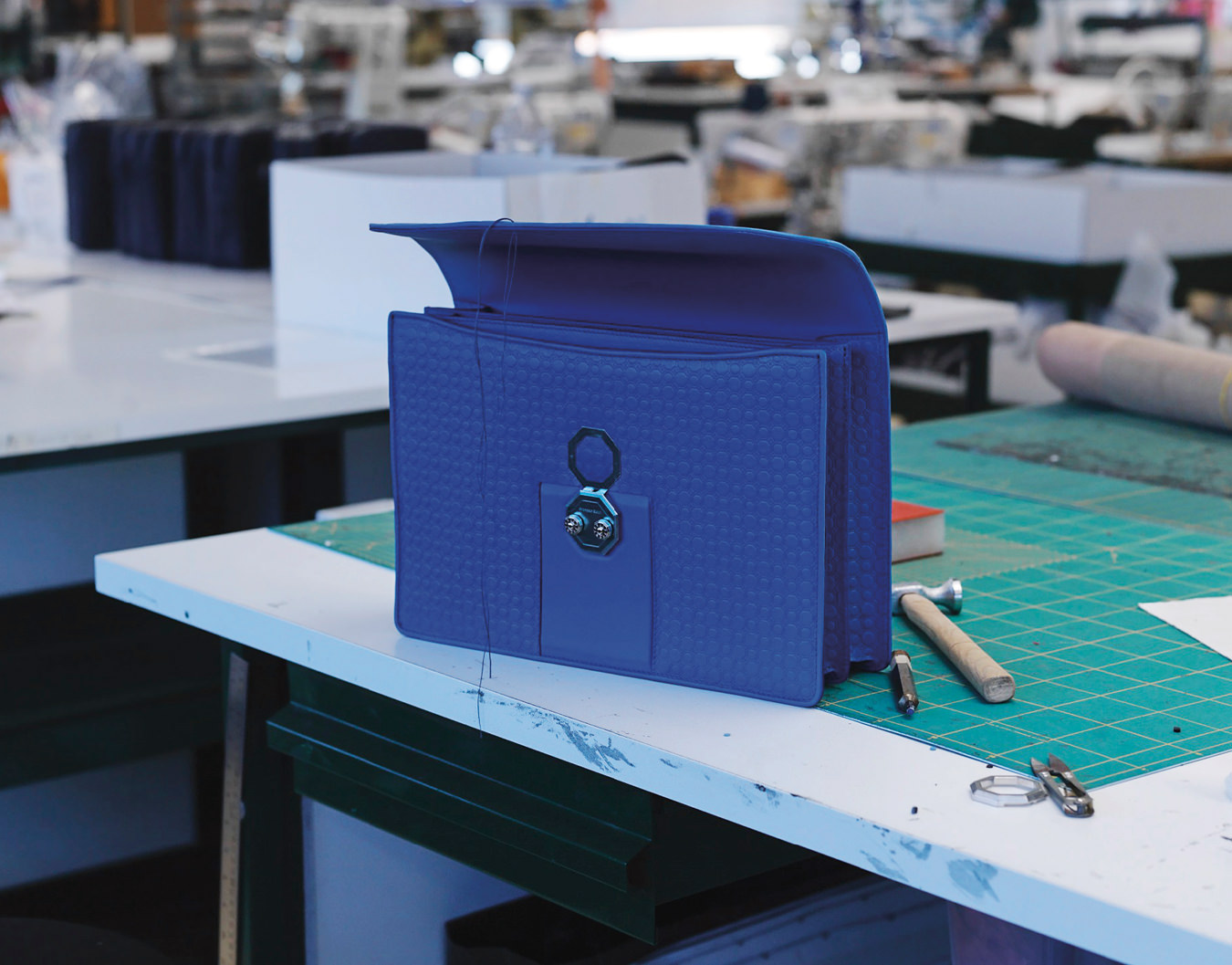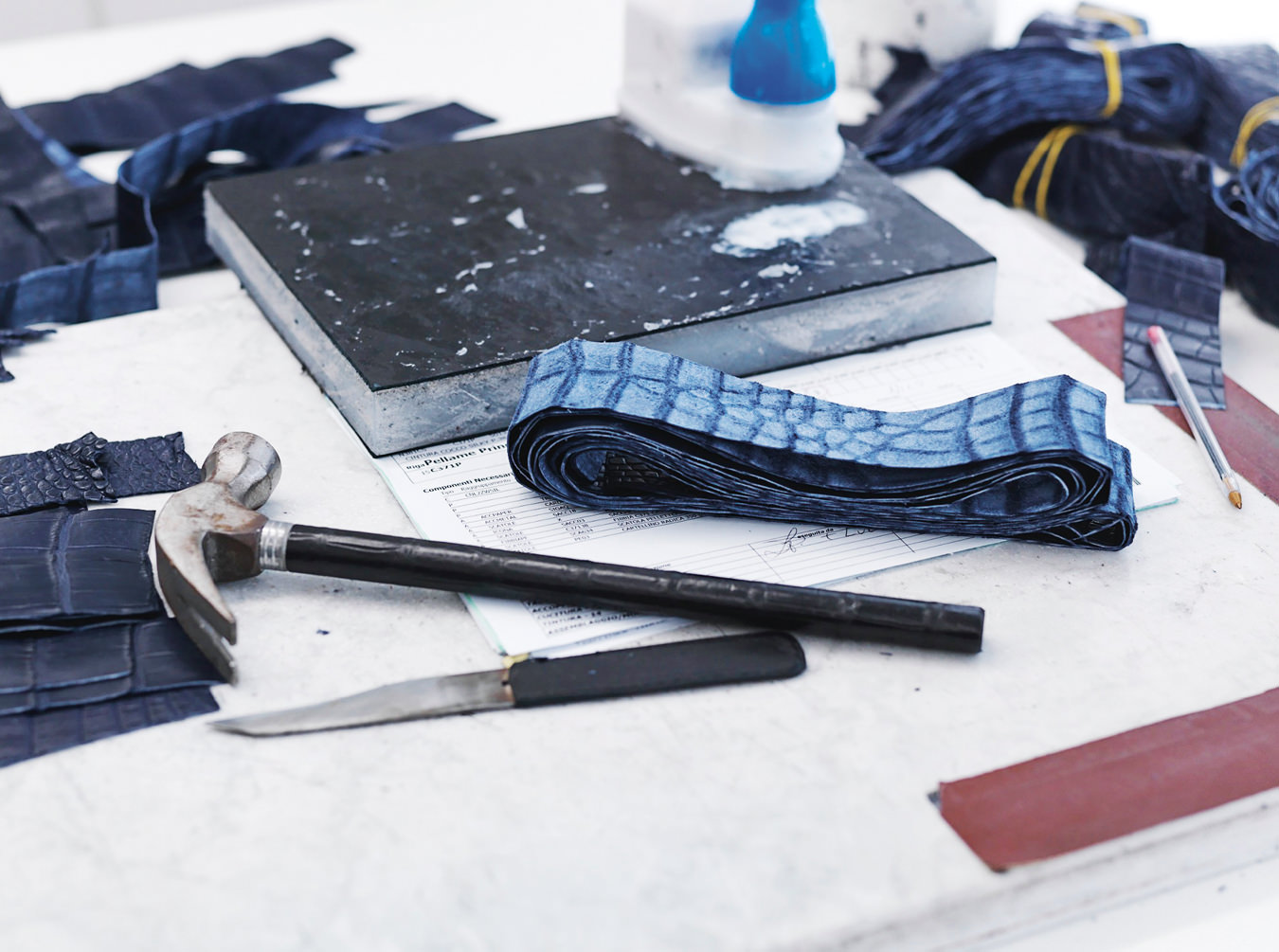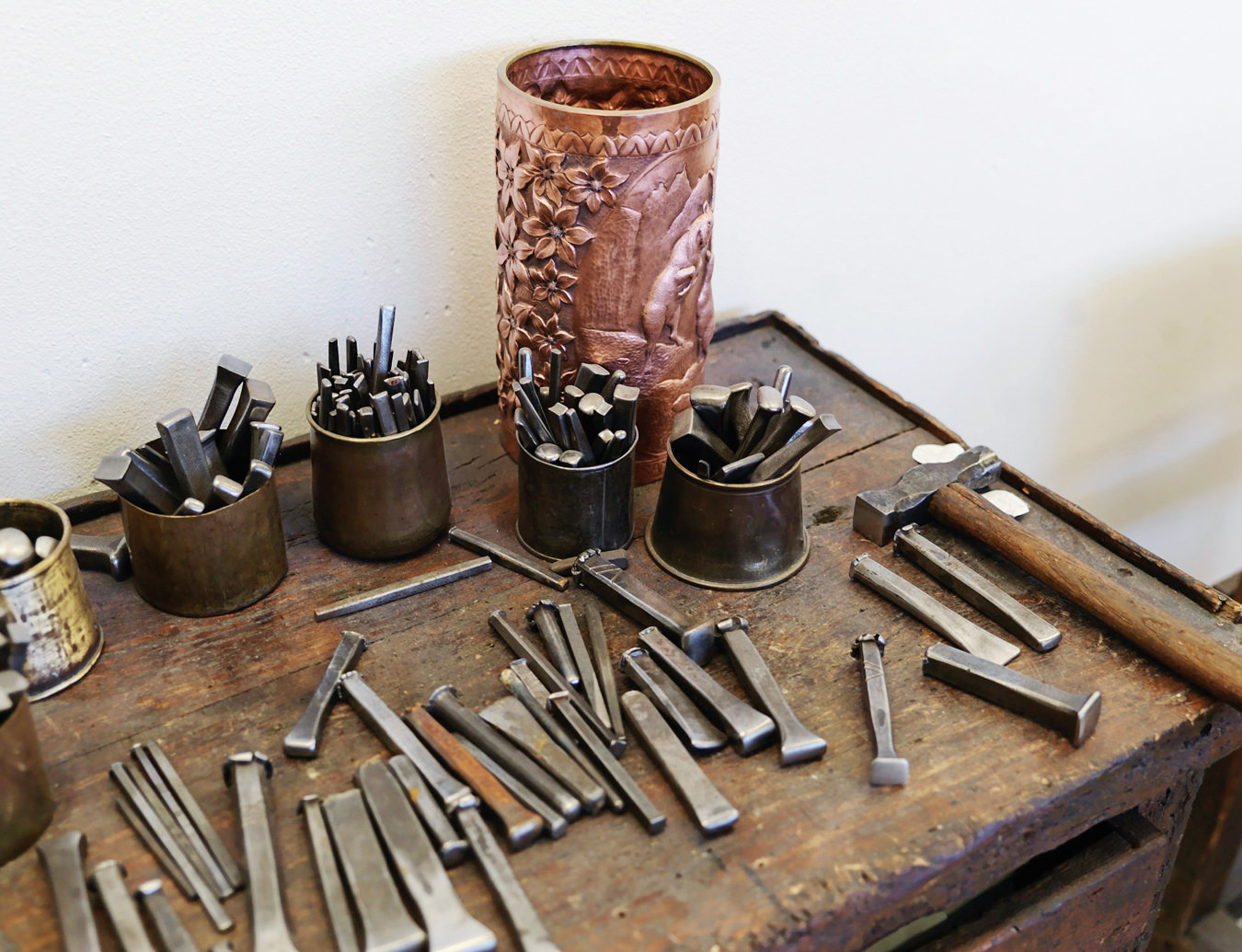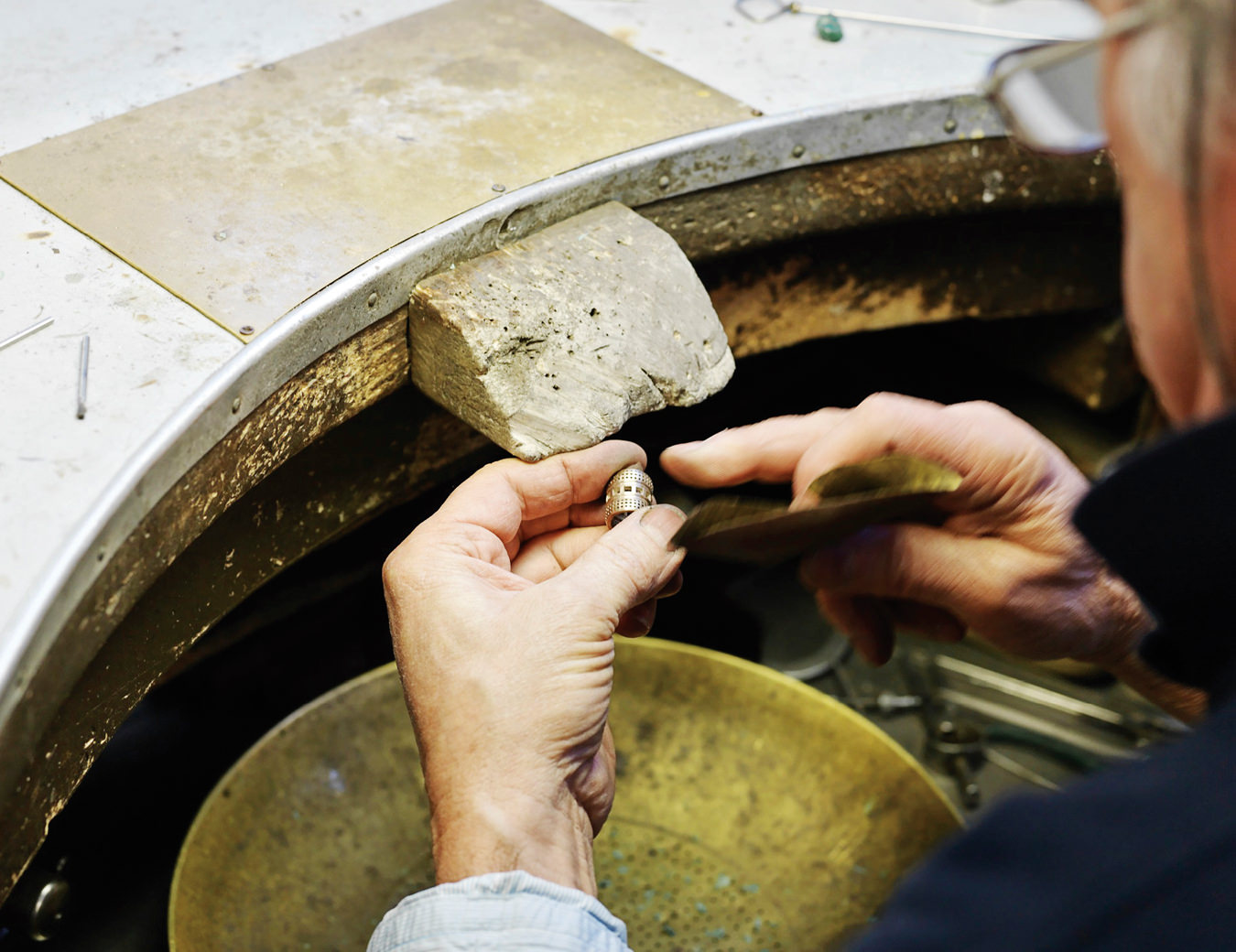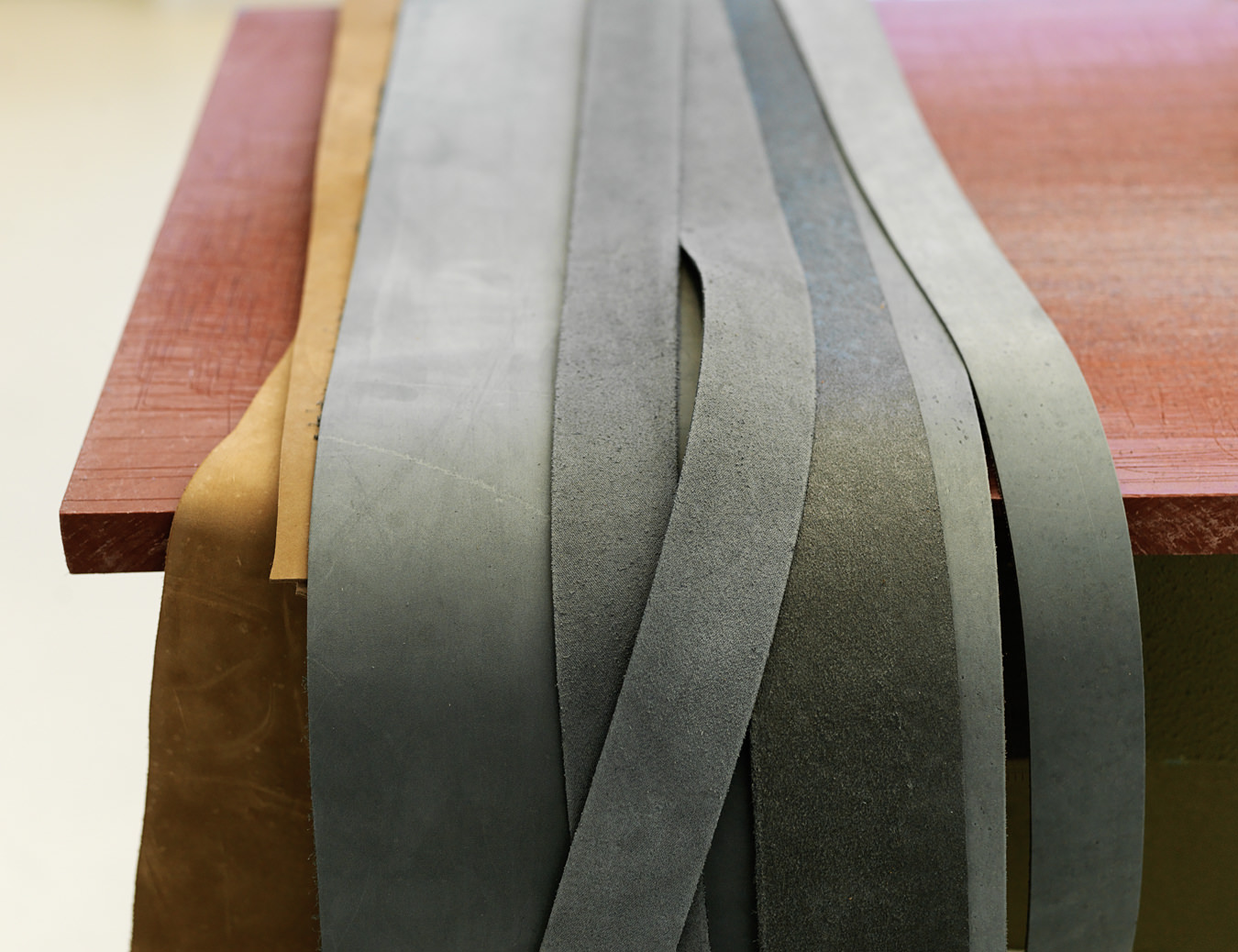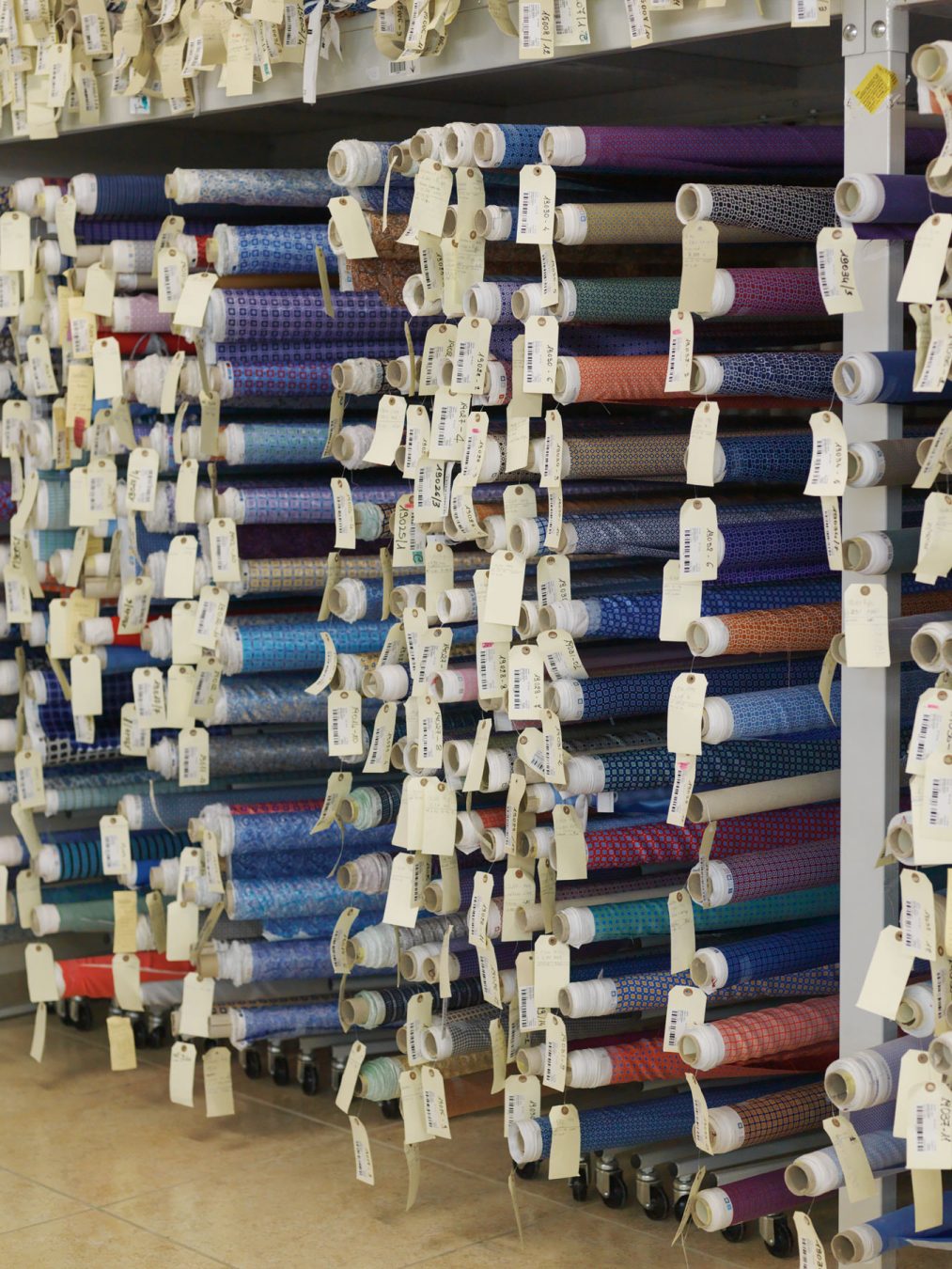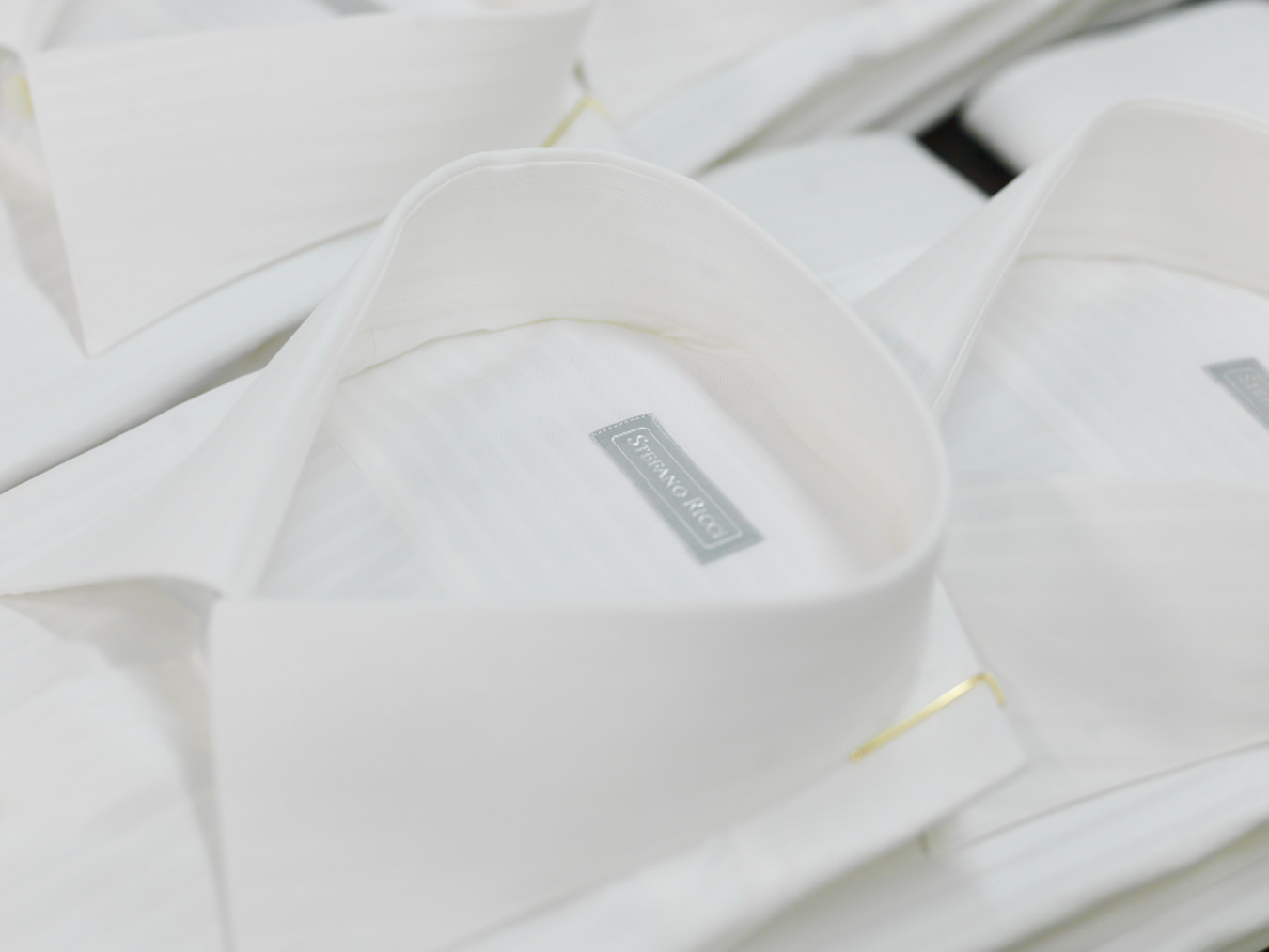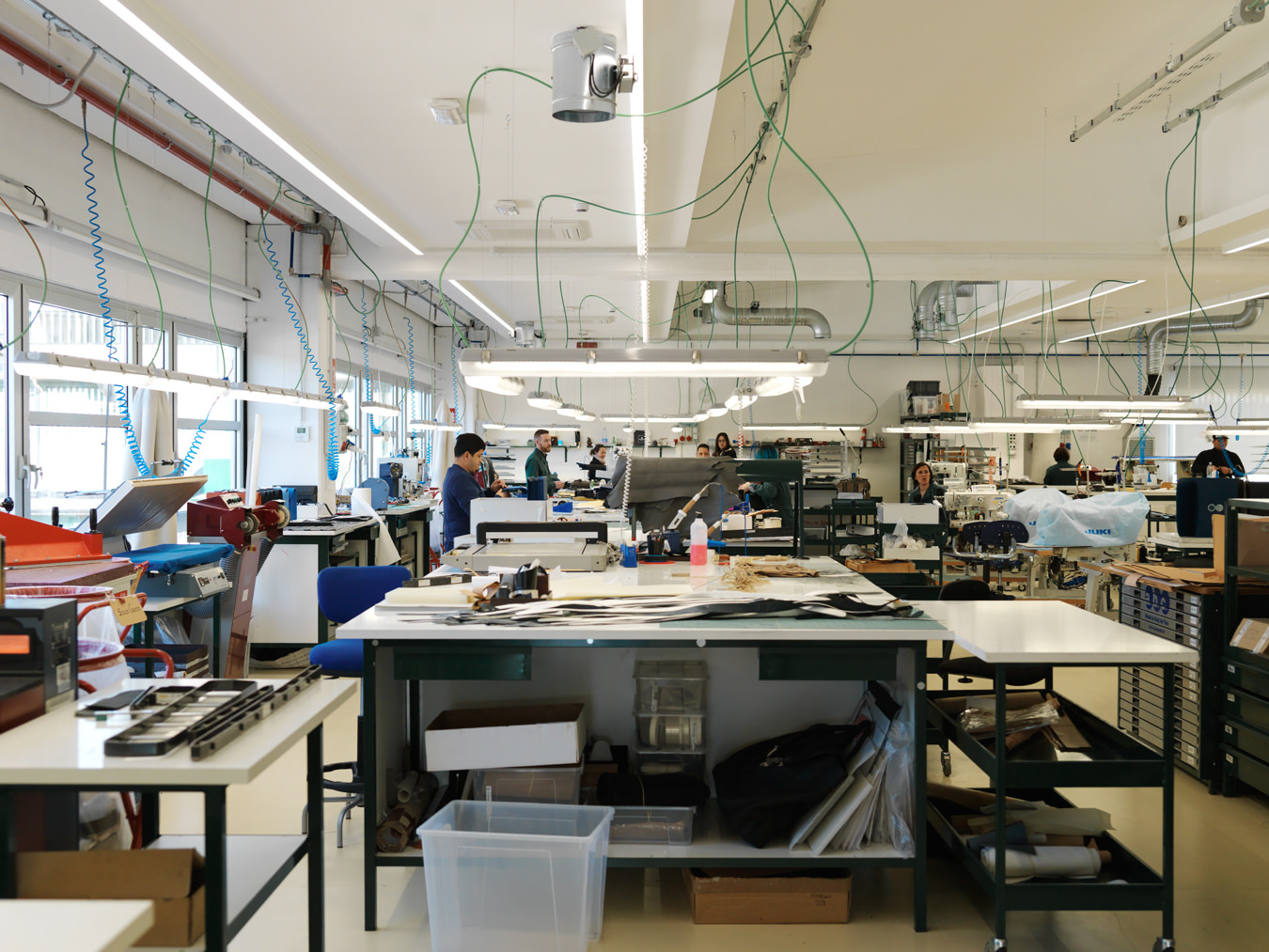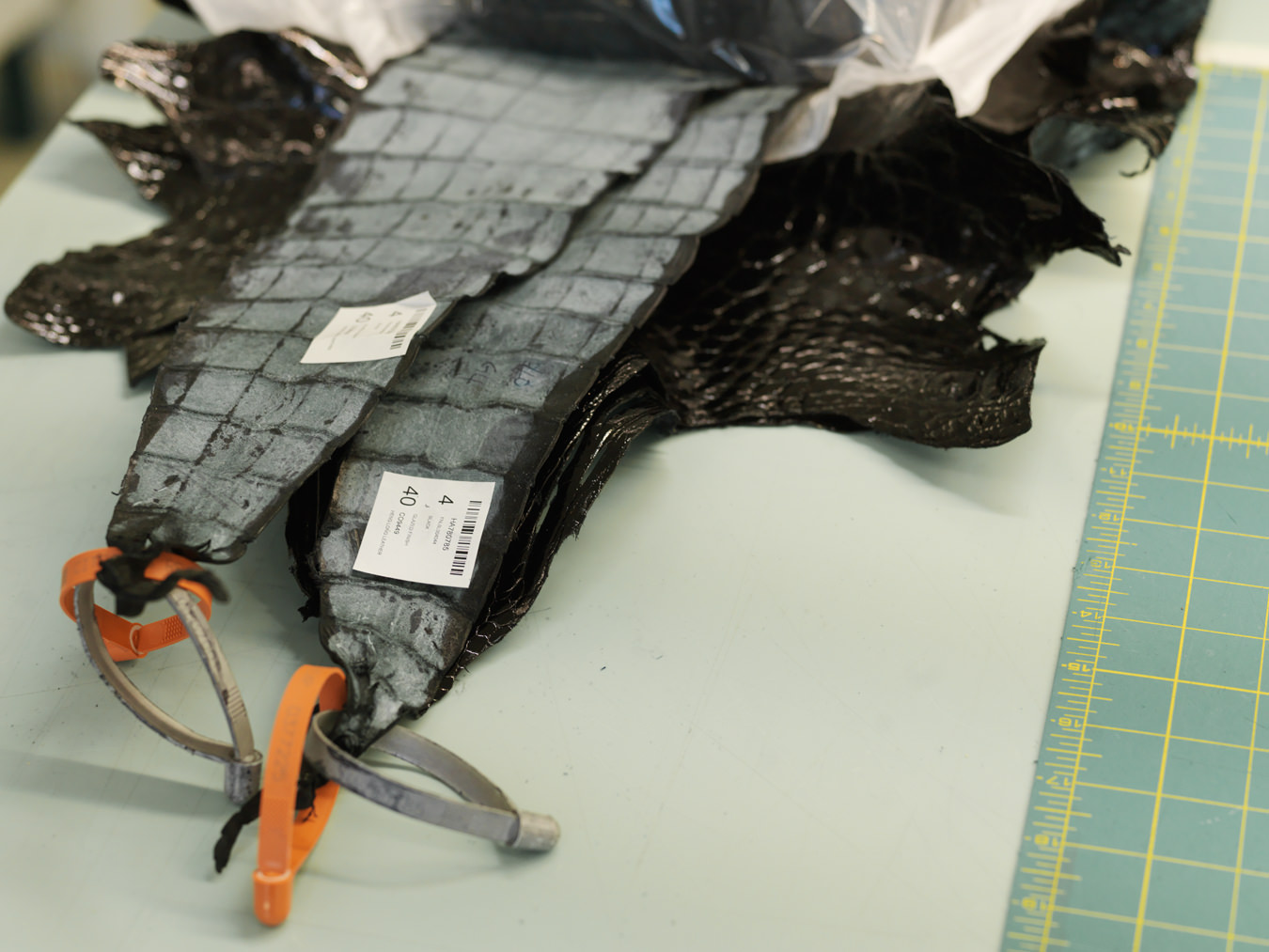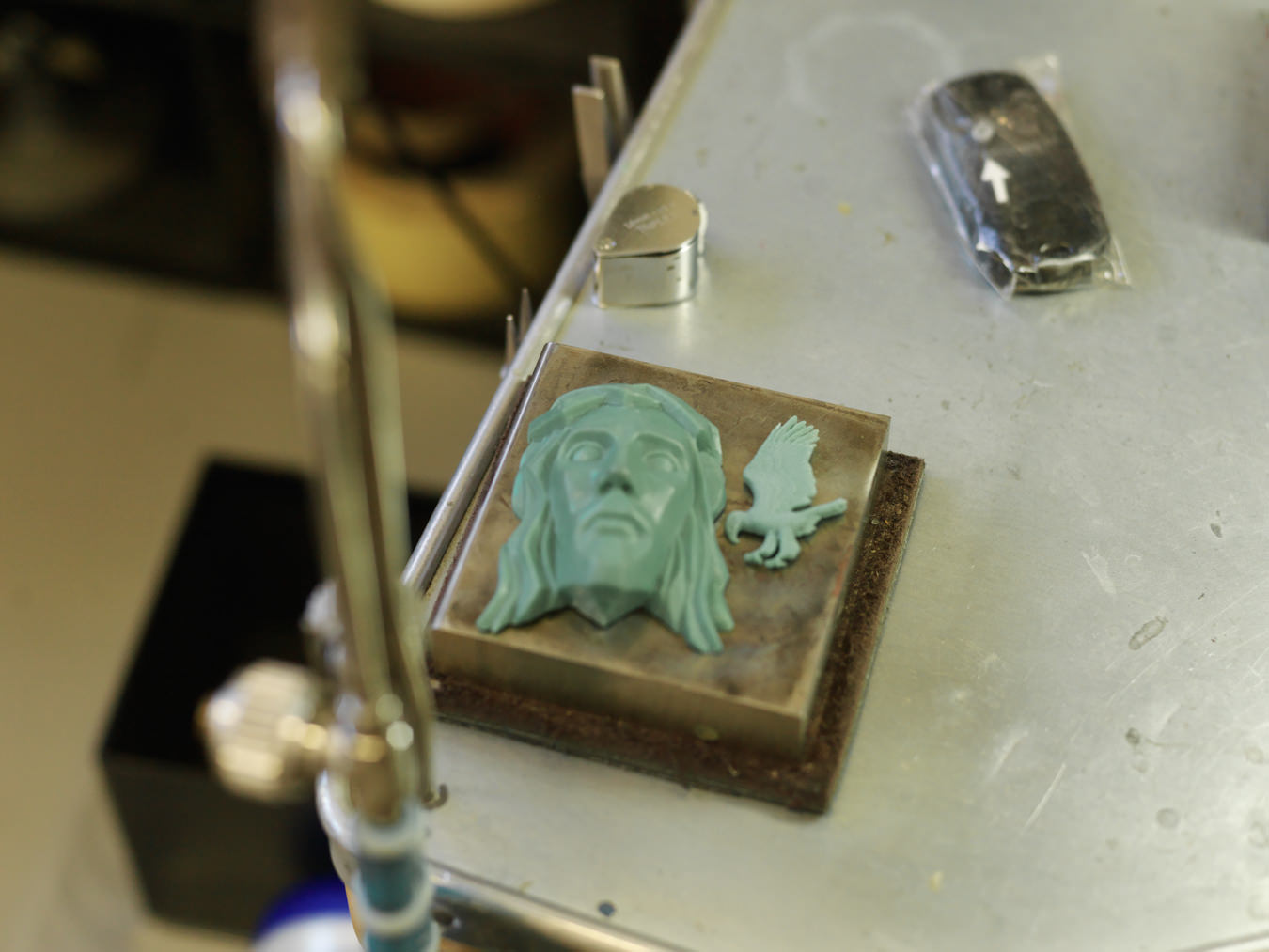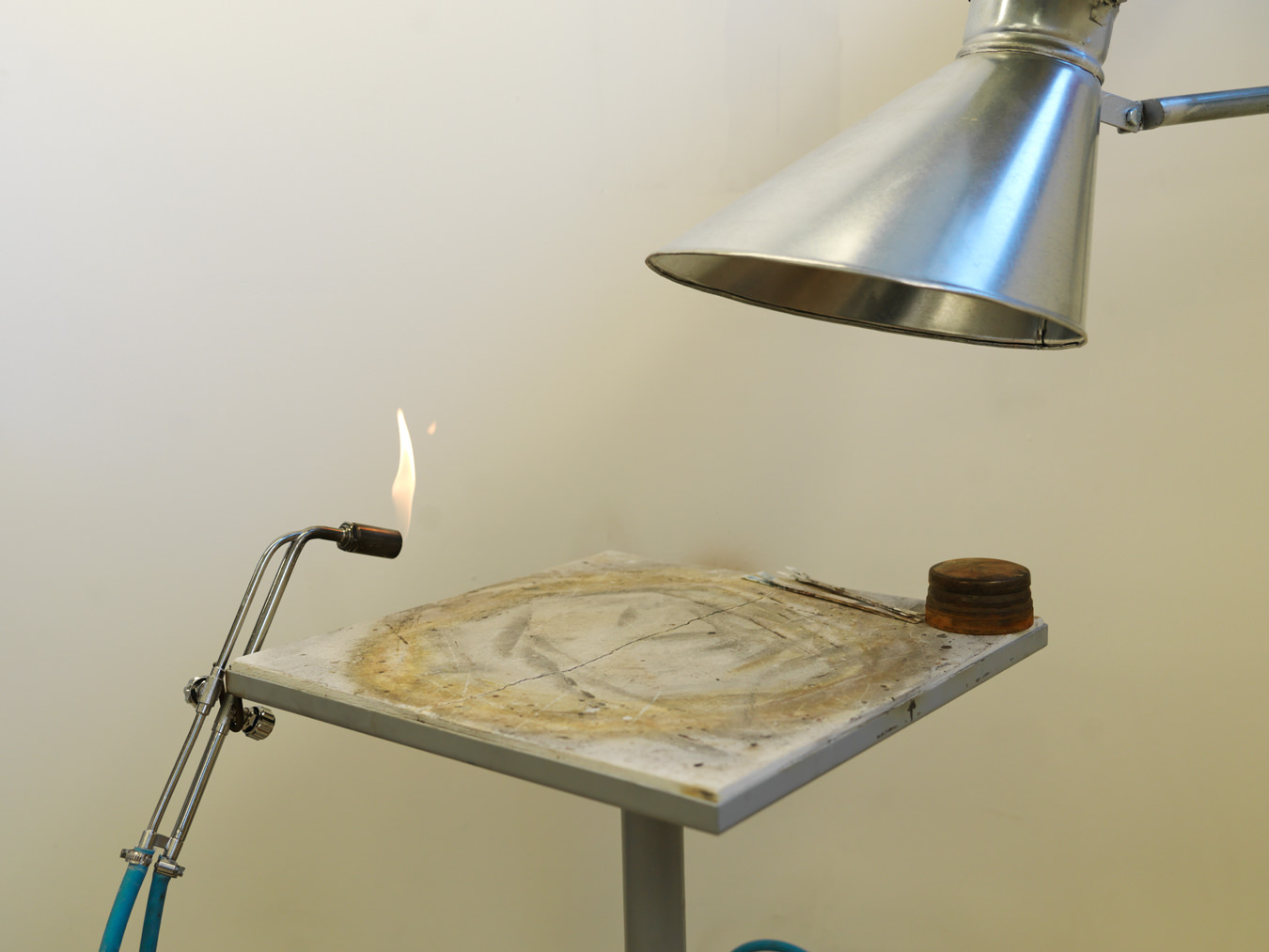In the gently sweeping hillsides surrounding Florence sits a modest factory and adjoining headquarters, the epicentre of which is an expansive, glass-walled space that functions as the office of Stefano Ricci. Florentine through and through, Ricci presides over his eponymous fashion brand, which has established an international reputation as a purveyor of only the ultimate, highest-quality men’s products. It is a remarkable company, with a larger-than-life force majeure at its head.
This particular day, he is poring over architectural renderings for the new Stefano Ricci boutique in Vancouver. “The fireplace, I think, is an excellent idea, but it should be moved farther left,” he says to an assembled team of four. He adds with a laugh, “They will need a fireplace in Vancouver, when all that rain comes down.”
Ricci’s is a large personality, his features, beard, and flowing hair best described as what a 19th-century novelist might call “leonine”. But there is always a hint of gentle humour, alongside an apparently incessant creativity. Ricci to this day personally designs all the new ties for each collection, often as many as 70 new looks, along with the rest of his fashion products, including shirts, belts, and suits. There is a significant bespoke suit offering as well, something that Florence boutique manager Alessandro Ciucci says “keeps us more busy than any other single thing in our business.” Ciucci explains over lunch at the new Antinori production centre just outside Florence that he returned from Dubai just the previous day, doing measurements for a client who wanted seven new suits.
“The finest quality does not arrive by accident. We must do everything ourselves, with the best artisans.”
Ricci began what is now a remarkable fashion empire back in 1972, making ties. This sprang out of a youthful passion for the accessory; he collected over 150 Hermès ties, and at some point decided it would be a good idea to create his own, and make them the best the world had ever seen. His success was immediate and profound, and expansion into other products followed fairly rapidly.
Today, sons Filippo, who is creative director, and Niccolò, who is CEO, are overseeing even further growth, into homewares and furnishings. But Ricci makes all the designs, and approves the final products. Nothing escapes his attention. “It is in my heritage, as a Florentine, I think,” he says. “The finest quality does not arrive by accident. We must do everything ourselves, with the best artisans.” A tour of the factory makes this abundantly clear. The environment is pristine, and the people working here are studiously attentive to their tasks, whether it is hand-cutting crocodile skin for belts, or ironing silk shirts before they are folded and packaged. It is an impressive sight, and to see a shirt or tie in its rawest form and then tracking how that piece comes together, ready for sale, is to fully understand that Ricci is not engaged in rhetoric when he says that “only the most meticulous care and attention can give you the best result.”
There is always a hint of gentle humour, alongside an apparently incessant creativity.
Ricci is fond of saying there is “a heart and soul” to each piece the company creates. This is personified in the family’s purchase of a mill, dating production back to 1786, called Antico Setificio Fiorentino. Here, silks and other textiles are made on centuries-old looms, using the finest raw materials. Interior designer Chiara Berti is one worker who helps guide Antico along. “This is such a wonderful place,” she says. “You can feel the spirit of it, really.” There are the looms, six hand and six mechanical, but also a warping machine that was designed by Leonardo da Vinci. The looms mean that cloths produced three centuries ago can be made exactly the same today. And the Ricci family can instill new patterns, new designs, into the process as well. This means requests pour in from all around the world, for embroidery, curtains, pillows, and wall coverings, among many other things, all of which keep this place busy year-round. Clients include such luminaries as Peter Marino, who special-ordered some wall coverings for the Chanel boutique in St. Petersburg. It is a fascinating sight, to see how perforated cards are attached to threads which run through the looms and create a weave specific to the card’s instructions. It is very much like an extremely early form of computerization, and the complexity of it all to a casual bystander is bewildering. But marvelous.
Over lunch, it becomes manifestly clear how important traditional values, including those in fashion and the Florentine arts, are to Ricci. He even remains loyal to local wines, only raising an eyebrow about a famous winery in the north. Later in the day, he is to embark on a hunting trip to one Tuscan valley where white wild boars are running rampant. He knows who will do the best job of preparing the meat, not wanting to waste anything at all, just like it has been done for centuries. He has an attendant passion for motor vehicles, and owns many vintage cars, including a Ferrari or two, and an Aston Martin once owned by Gerald Ford. Yes, as in the president.
Ricci is fond of saying there is “a heart and soul” to each piece the company creates.
Ricci opened his first free-standing boutique not in Italy, but in Shanghai, in 1993. Many considered it a risky, even crazy move, but Ricci was adamant this was the right thing for the company. History has shown him to be resoundingly right. The success in Shanghai has led to openings around the world, carefully considered and planned to the last detail right in his office, just like the one in Vancouver. “We want to be sure the city is ready for us, and in the case of Vancouver, we are very confident,” he says. “It is a wonderful city, and we are happy to be there.” A note of actual glee is detected in his voice.
Ricci is propelling forward with every well-heeled step, and the future certainly looks good. Almost as good as someone wearing a bespoke Stefano Ricci suit and tailored shirt accessorized with shoes, cufflinks, and belt, heading out for a night on the town.
Read more from our Style section.

